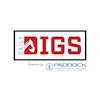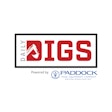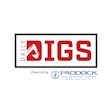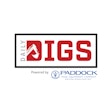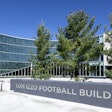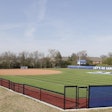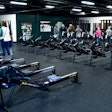Carefully Planned Aesthetic Lighting Techniques are Becoming a Top Priority in Facility Design
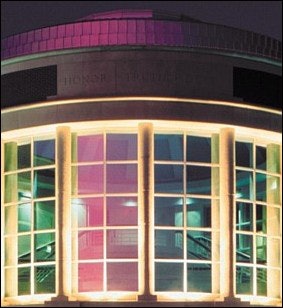
Aesthetic lighting, which has for decades been associated with high-end restaurants and hotels, in the past several years has begun creeping into athletic, fitness and recreation facilities. As an increasing number of these facilities are built and the competition for members grows, more time and money are spent on developing image-enhancing lighting strategies.
Most architects would agree that well-planned lighting has become just as important as other elements of facility design. "A pleasurable environment will eventually gain you members," says Rudy Fabiano, president of Fabiano Designs in Montclair, N.J., of lighting's importance in the private-club realm. "It will bring in more people, and it will increase retention." According to Fabiano - who has implemented some of the most cutting-edge lighting techniques in health clubs to date - an ideal facility would feature three different types of lighting: utilitarian, dramatic and aesthetic.
Utilitarian lighting is used for activity spaces that need a specified amount of light, such as fitness rooms, gymnasiums and natatoriums. Different strategies can be used for lighting activity spaces in relation to non-activity areas. For example, Wayne Hughes, principal of Hughes Group Architects in Sterling, Va., has a very specific interior lighting philosophy. When designing recreation centers, one of his objectives is to emphasize the activity spaces with light while low lighting the lobby and corridor areas. "We do that so that the activity centers become the sources of light and life. By low lighting the public zones, you are drawing people's energies to the activities like a moth to a flame, and at the same time, creating a variety of lighting levels so the building has a visual depth."
While architects generally use only utilitarian lighting in activity spaces, dramatic and aesthetic lighting are used in non-activity areas to create a desired environment. Dramatic lighting, Fabiano explains, is typically created by concealing the source of the light. Some examples include placing light sources in the floor and shooting light upward onto a column, or putting a light source on the ceiling and directing a beam of light onto dumbbells to make them sparkle.
"One of the mistakes a lot of people make is they blow general light everywhere, and then they can't have dramatic lighting," notes Fabiano. "Dramatic lighting by its nature has contrast, so you need darkness. Owners shouldn't be afraid to have some areas that are a little darker and some that are a little brighter; that creates a lot of interest."
Other ways to use dramatic lighting are to conceal a series of lights within coves in ceilings and walls, or in columns. "By integrating lighting in concealed ceiling areas, you further articulate the ceiling element," says Stephen DeHekker, vice president of St. Louis-based Hastings & Chivetta Architects. "Instead of using a pendant or an individual light fixture in the ceiling, the whole ceiling becomes the light fixture."
When fixtures are concealed in coves, for example, rays of light reflect off ceiling elements, as well as back down into the space - providing lighting below, while adding character to the ceiling. Columns can also be used to create a dramatic lighting effect. For instance, an architect might group three or four pieces of steel together to create a cluster of columns, says DeHekker, and by strategically placing light fixtures within the cluster, the columns become illuminated themselves, while also spreading light around them.
The more refined lighting design becomes, DeHekker says, the more it becomes integrated into the building. "You're attempting to blur the boundaries between the light fixture and the architectural element," he says. "Successful lighting design in many respects is something you don't notice, you just experience."
Aesthetic lighting, a somewhat less subtle option, is when the light fixture itself is used as an attractive element. According to Fabiano, this type of lighting is used to mark a specific area or destination point. For instance, an attractive wall sconce might be placed on each side of an elevator or doorway, or decorative lights may be suspended over a registration desk.
"If a combination of all three lighting types is used, and if it's used wisely, you'll get a great project out of it," says Fabiano. "The reason to go with all three is to get away from the warehouse, gym box concept and move toward the health club as a place for experience. Lighting diversity will give users diverse experiences, and that will make for a successful facility."
Although more health clubs than ever are able to fund these unique lighting techniques, Fabiano is quick to point out that the majority of facility owners cannot afford all three types. "The health club industry was never really well financed," he says. "And unfortunately, good lighting costs money. In fact, in almost every project we design, the first place the client will cut will be the lighting, because the client will ask, 'Do we really need it?' "
When clients decide they don't need or can't afford extra aesthetic lighting, architects try to work creatively with what's left. "The most cost-effective method is to take advantage of the required functional lighting in the space, and to use that as effectively as you can to create a decorative effect," says DeHekker. An example of this is using indirect lighting in a natatorium with an architecturally attractive roof structure or ceiling. Not only does indirect lighting reduce glare in the pool area, it also accents the aesthetics above.
Another way to add lighting aesthetics without spending too much money is to bring as much natural lighting into the facility as possible. "One of the top 10 things I would advocate in any facility is putting in skylights," says Fabiano. "Natural lighting adds greatly to people's comfort within a space. If people are working out, natural lighting tends to make the workout become a little bit more spiritual. It helps people enjoy the experience of being in your facility."
This philosophy also applies to non-activity spaces. "We tend to light objects in space as opposed to lighting the space itself," says Hughes. "In lobbies, we try to use as much natural lighting as possible so that the passing of the time of day is an important part of the life and aesthetics of the building. A lobby is a transition zone from the outside to the inside of the building, and natural lighting makes for a better transition."
Extensive use of skylights and windows not only contributes to the levels of daylight in interior spaces, it also adds to the nighttime aesthetics of the facility. When the interior lights are on at night, a building with an abundance of glass will inevitably glow, shaping the overall exterior image of the facility. Many designers put in interior lights to specifically illuminate a skylight at night. Fabiano points out that an architect may light the skylight from below with a blue gel light or place lights on the outside of the building to shine back down through the skylight. Whatever the technique, it's imperative to plan interior lighting with exterior views in mind, according to DeHekker. "When you light the inside of a space, you really should take into account how the building is going to be viewed from the outside," he says. "Whether it's glass or a skylight, if it's visible from the outside, it's going to affect and characterize the overall image of the building."
Exterior aesthetic lighting can also be used to improve a facility's image in a nighttime setting. "Outdoor lighting is a must," says Fabiano. "We aggressively try to educate and convince our clientele to use outdoor lighting to aesthetic benefit. We believe there are a great many people who will drive by your facility and never come in because of the feeling they get from the building." An example of outdoor aesthetic lighting is placing light sources in the building's surrounding landscape, and pointing the light upward to light the exterior walls of the facility. Fabiano likes this technique, adding that he feels it makes a facility look softer and friendlier. Another example of exterior lighting is accenting a particular architectural element, such as an entrance or a rotunda, with outdoor light fixtures. "At night, you have control over the electric lights," says DeHekker. "You can control the image of the building, and give it a completely different character than it has during the day."
Every architect will inevitably have his or her own lighting philosophies and preferred techniques. One thing is clear, though: A variety of illumination strategies is vital. Lighting has become such an important factor in facility design that Hughes recently held a daylong lighting workshop for the owners of a university recreation facility his firm is designing. The purpose of the workshop was to demonstrate various lighting techniques and encourage the owners to express their views on the subject. "We did a lighting study of the entire facility, and we showed them our philosophy and the intensities we're after," he says. "The owners made changes to areas where we were doing some extreme things, but they are clearly aware that it's going to be a very uniquely lit environment."
Whether unique or not, a facility's lighting is carefully planned and developed by controlling and changing light levels. One way of manipulating lighting in an area is by using different "color temperatures" of light. These refer to the visual spectrum of light, reds being on the "warm" end and blues on the "cool" end. In general illumination, one would try to use light that's most natural, approximating the natural color spectrum, so the environment and the people in it look as natural as possible, according to DeHekker. But in order to deliberately accent and enhance certain aspects of the space, one would use either warm or cool lighting. In some cases, he adds, one might use a combination of both to create a lighting pattern or composition on certain architectural elements of the area. "You might use a very cool light on some of the steel elements of a stair, and then a warm light on its stone base," he says. "That way, you get a contrast of a very clean, white light on the steel, and a warm light enriching the natural look of the stone. When you combine the two, you begin to paint with light."
With all the different types of lighting and lighting techniques available, architects must also be keenly aware of energy efficiency. Not only do they want to keep operating costs down, they also have to abide by energy codes. "It's like any good design," says DeHekker. "It's a balancing act between the functional requirements, energy-efficiency code requirements and the desired aesthetic effect."
"In a typical project, we'll use up to 20 different kinds of lighting fixtures," says Fabiano. "But we don't want the owner to have to change bulbs every three weeks, because that's not going to happen, and then they're going to have beautiful fixtures without any lighting." To address this, he adds, it's imperative to use energy-efficient lighting, as well as long-life bulbs. He also requires a lamping schedule from contractors, charting which bulbs go into which lamps and how often they should be changed.
Extensive use of skylights and glass is another energy-efficient way to bring light into a facility during the day. Hughes cites a recent study that shows that a facility owner can save up to $17,000 a year in electric bills by investing up front in skylights over a pool area. "We start from the fundamental premise that the owner has to pay electric bills," he says. "Every time we select a fixture, we look at energy efficiency."
One way facility operators can justify the added expense is to think of it as marketing. "Typical athletic or recreation facility owners have a limited budget," says DeHekker. "Operating budgets are important to them, so that issue has to be addressed, but aesthetics has to be addressed, as well, because that brings people into the facility and makes it more enjoyable for them to be there."













